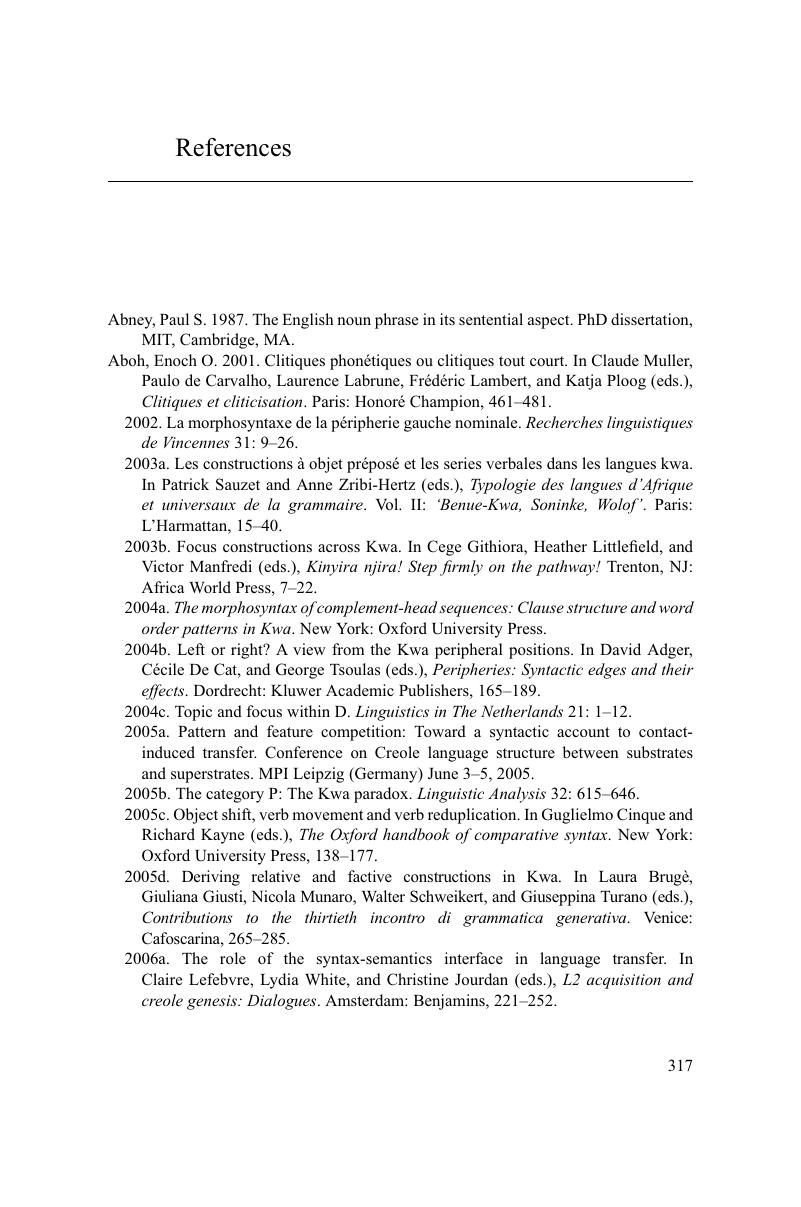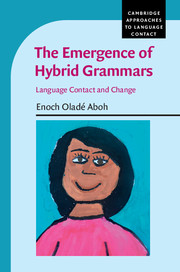Book contents
- The Emergence of Hybrid Grammars
- Cambridge Approaches to Language Contact
- The Emergence of Hybrid Grammars
- Copyright page
- Contents
- Figures
- Maps
- Foreword
- Book part
- Glossary
- 1 Introduction
- 2 The agents of creole formation: geopolitics and cultural aspects of the Slave Coast
- 3 The emergence of creoles: a review of some current hypotheses
- 4 Competition and selection
- 5 The role of vulnerable interfaces in language change: the case of the D-system
- 6 The emergence of the clause left periphery
- 7 The emergence of serial verb constructions
- 8 Conclusions: some final remarks on hybrid grammars, the creole prototype, and language acquisition and change
- References
- Author index
- Language index
- Subject index
- References
References
Published online by Cambridge University Press: 05 November 2015
- The Emergence of Hybrid Grammars
- Cambridge Approaches to Language Contact
- The Emergence of Hybrid Grammars
- Copyright page
- Contents
- Figures
- Maps
- Foreword
- Book part
- Glossary
- 1 Introduction
- 2 The agents of creole formation: geopolitics and cultural aspects of the Slave Coast
- 3 The emergence of creoles: a review of some current hypotheses
- 4 Competition and selection
- 5 The role of vulnerable interfaces in language change: the case of the D-system
- 6 The emergence of the clause left periphery
- 7 The emergence of serial verb constructions
- 8 Conclusions: some final remarks on hybrid grammars, the creole prototype, and language acquisition and change
- References
- Author index
- Language index
- Subject index
- References
Summary

- Type
- Chapter
- Information
- The Emergence of Hybrid GrammarsLanguage Contact and Change, pp. 317 - 336Publisher: Cambridge University PressPrint publication year: 2015



